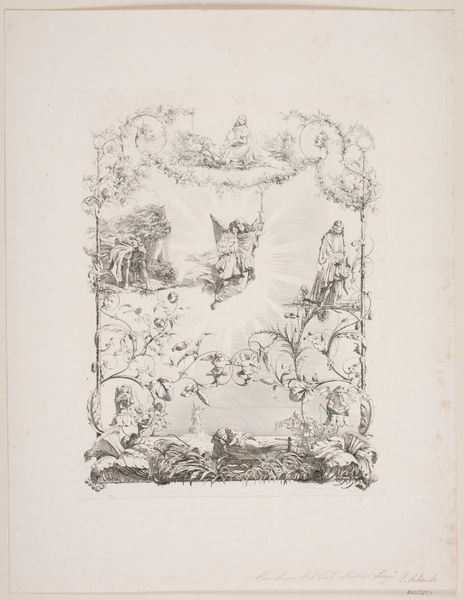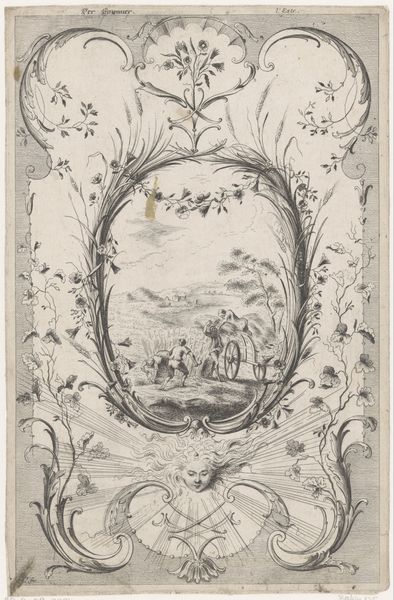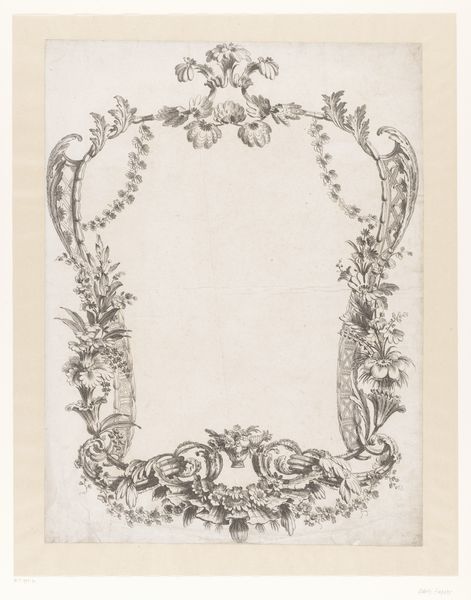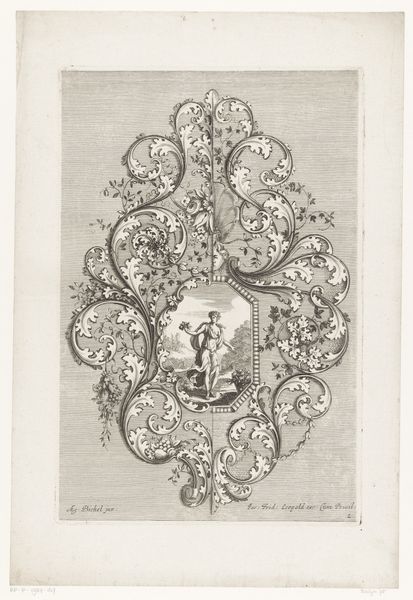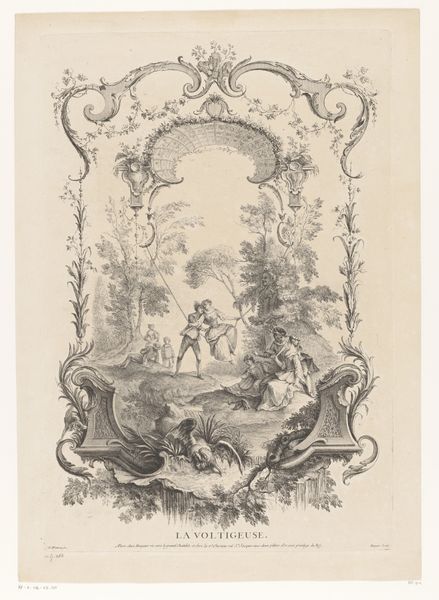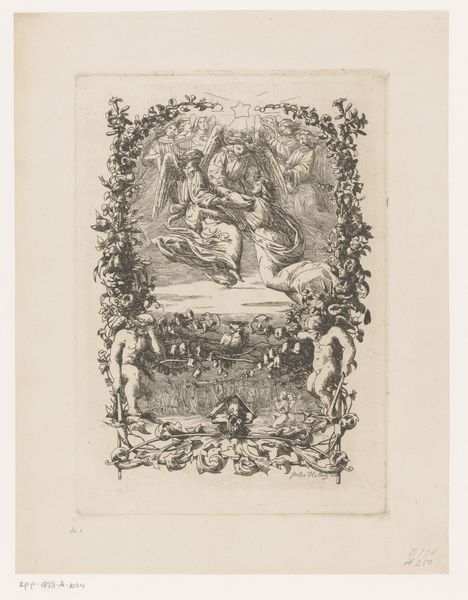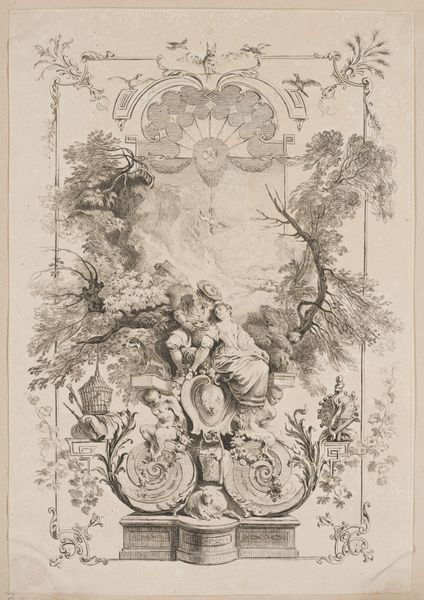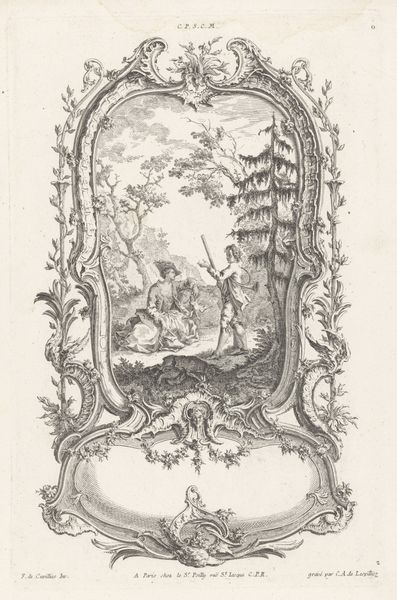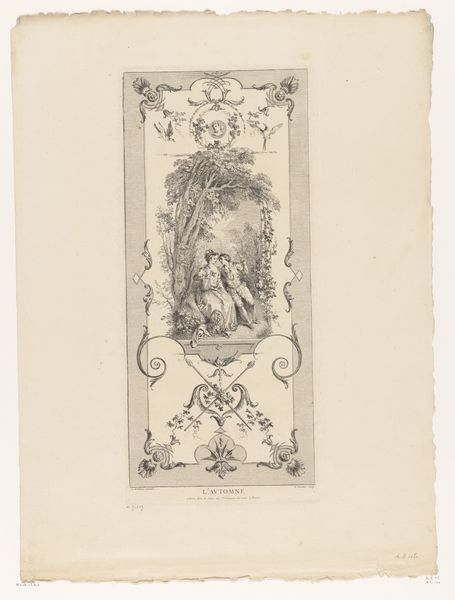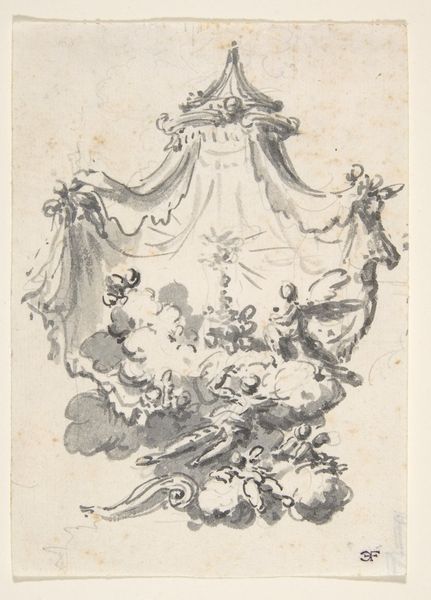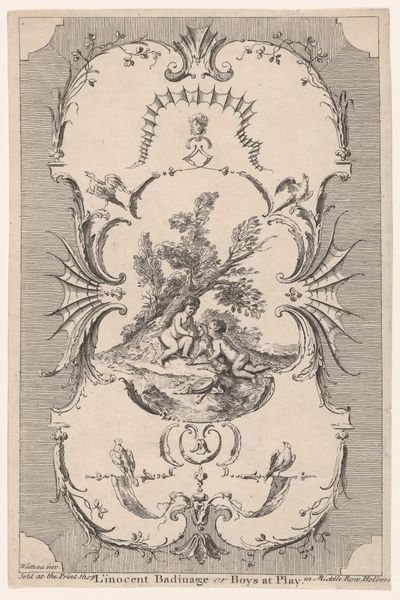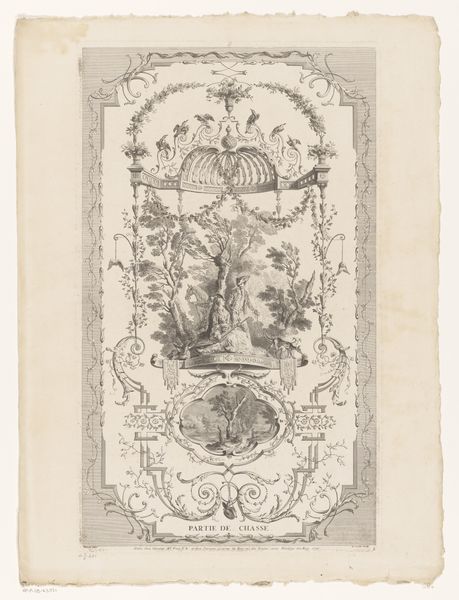
drawing, print, ink, pencil, engraving
#
drawing
#
ink drawing
#
allegory
# print
#
figuration
#
ink
#
romanticism
#
pencil
#
engraving
Dimensions: 441 mm (height) x 301 mm (width) (bladmaal)
Editor: This is “Randtegning med engle,” or "Marginal drawing with angels" by Sophus Schack, created sometime between 1811 and 1864, using ink, pencil, and engraving. The composition feels almost like a frame, and I'm curious about the angelic figures placed around it. How do you interpret this work? Curator: This piece really speaks to the power of Romanticism to intertwine the spiritual with the earthly, doesn't it? Think about the period in which Schack was working; shifts in societal power were starting to really unsettle established religious beliefs, yet spiritual yearning didn't disappear. This engraving seems to me like an attempt to reimagine those beliefs within a different framework. Editor: I see what you mean. So the frame itself, the boundary, does it represent something specific in this context? Curator: Precisely! Boundaries are constantly negotiated in art, particularly during periods of social and political upheaval. This elaborate, almost overgrown border, populated by angelic figures, could be seen as a symbolic attempt to contain or perhaps redefine the sacred. Where do these ethereal beings exist in relation to that empty space within the frame, or us looking at it? How might its accessibility influence the artist’s commentary on religion's role, when traditions and institutions started being questioned more intensely? Editor: That's fascinating. I hadn’t considered the emptiness inside as being such a critical element. The active debate lies within this dichotomy of containing vs exploring new frameworks for religion's place in the world. Curator: Exactly. Art like this serves as a vital visual record, illustrating how individuals grappled with and reshaped their understanding of spirituality during times of change. This challenges us to explore how art reflects power, questions tradition, and envisions alternate realities. What does "Randtegning med engle" tell us about navigating the borders of faith in the face of doubt? Editor: That’s given me so much to think about, especially regarding the socio-political background that fueled this expression and its meaning. I appreciate that insight. Curator: And I am glad to have the opportunity to consider Schack's vision along with you. The most fascinating thing is how works such as these encourage us to constantly rethink history and question our contemporary cultural standards.
Comments
No comments
Be the first to comment and join the conversation on the ultimate creative platform.
